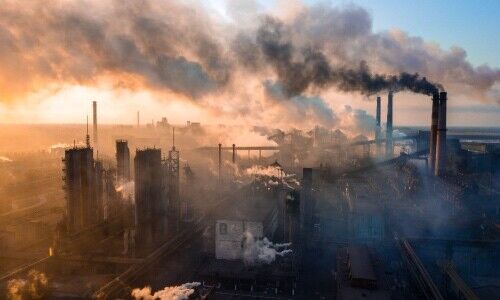The Stark Reality of Banks and Carbon
Led by major institutions in China and the US, banks the world over continue to fund gigatons of future C02 emissions.
China and the US, the world’s two largest geopolitical adversaries, have something deeply in common – banks in both countries continue to finance very large-scale fossil fuel projects.
A graphic published on Saturday by Visual Capitalist shows exactly how deeply they are entangled in funding the earth’s carbon bombs, or fossil fuel projects expected to generate more than one gigatonne of CO2 over their useful lifespan.
China Leads
At a sovereign level, the overall leader is China, whose financial institutions have provided $541 billion in backing, although they are closely followed by the US with $525 billion.
Canada, France, the UK, and Japan follow, although their funding levels are far more moderated at $156 billion, $154 billion, $135 billion, and $134 billion respectively.
JP Morgan on Top
When it comes to individual institutions, JP Morgan comes out first with $142 billion, which would place it fourth worldwide if it were a sovereign nation. They are followed by Citi with $119 billion, and Bank of America at $93 billion.
China’s banking sector comes out slightly better here, with ICBC placing first with $92 billion followed by Bank of China at $66 billion, although that is already less than BNP Paribas, which has $72 billion on its books. Other banks with notable levels of financing include UK-based HSBC and Wells Fargo, both of whom come in with $62 billion.
No Net Zero
Visual Capitalist contrasted the totals with the world’s commitment to reach net zero in 2050, saying that despite the 2015 Paris Agreement banks continue to finance 425 carbon bombs in total, and that these are expected to produce 1,180 gigatonnes of CO2.
Despite that, they comprise less than half of the world’s oil and gas extraction projects and about a quarter of those related to coal, with total spending for carbon bombs currently $1.8 trillion.
Not Much Budget
According to Visual Capitalist, we currently have about 4-500 gigatonnes left in the 2050 carbon budget but the projects underway are more than double that level.
It might be easy at this juncture to directly apportion blame and anger at banks and the international finance system, but the truth is a good deal more complicated than that.
The Role of SOEs
HSBC is a case in point. In January, it publicly indicated it would no longer finance new oil and gas fields - but a look at its energy policy shows the situation is by no means that simple.
On page six, they mentioned the role of state-owned enterprises outside the EU and OECD subject to different planning cycles and that they would take them «into account where appropriate».
Mainland China
«Such cases will be subject to annual review to help enable HSBC to monitor that sufficient progress on transition planning is being made, including an assessment of being compatible with HSBC’s targets and commitments,» the policy stated.
It may be an oblique reference to SOEs in mainland China and elsewhere in Asia, and «sufficient progress» is likely to end up being evident as an annual cut-and-paste committee submission by the SOE - but it also raises an important point.
Hanging Out to Dry
If we leave out the Ukraine war and the changed energy scenarios in much of the world, it appears that governments are more than happy to publicly let the world know they are doing their cheerful best in achieving Net Zero – all the while letting banks bear the brunt of criticism.
However, all fossil fuel and C02 projects require some kind of official, government approval and banks are frequently only a necessary adjunct in the overall process and it is not unheard of for governments to require them to provide the necessary financing in the first place.























